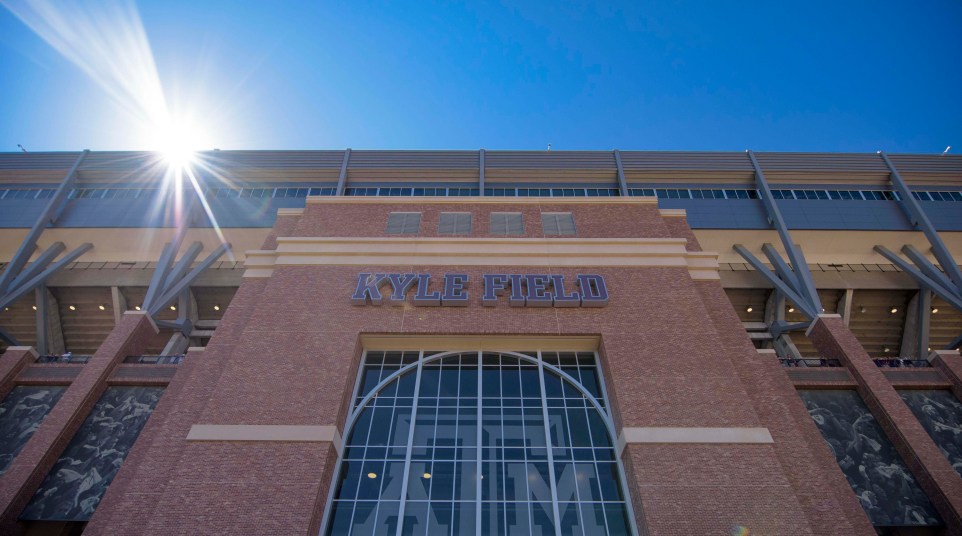
How hot is too hot? Extreme heat could become an SEC issue
If you can’t stand the heat, get out of the SEC!
Among the Power 5 conferences, the SEC has the hottest game day high temperatures on average.
Whether this is one more thing the SEC can take pride in, or a cause for concern, is up to you. One thing is for sure, the multi-decade trend toward longer, more intense heat waves world-wide shows no signs of stopping.
Week 4 in the SEC promises more of the same (more on that below).

Last season alone, SEC games were played in 90-plus heat at Alabama (93 degrees, Sept. 10), Florida (91, Sept. 10), Auburn (91, Sept. 24) and Tennessee (91, Sept. 24). Game time temperature records are sketchy, so there might have been more. Go back a few more years, and you’ll find a 96-degree day at Alabama’s Bryant-Denny Stadium (Sept. 3, 2011) and a 95-degree kickoff at A&M’s Kyle Field (Sept. 14, 2013).
January to August 2017 was warmer than average for all states in the Lower 48: https://t.co/6Ogel1FRfB #StateOfClimate pic.twitter.com/8OSf9spT6Z
— NOAA NCEI Climate (@NOAANCEIclimate) September 7, 2017
A couple years back, a guy named Alex Lamers did an incredibly thorough analysis of weather as it relates to college football. Here are his SEC numbers for average number of days during the season (September-November) above 90 degrees, and the average daily high temperature.
[table “” not found /]
By Lamers’ numbers, the SEC has the hottest football season among the Power 5 leagues. A&M is fifth in the country for number of 90-degree days during the season. Conference USA, with schools in Houston and deep in Florida, is even more sweltering.
So yeah, it has always been hot in the South. Game-days in the mid-90s are probably tougher on squads less acclimated to the heat, like Temple (below) when the temperature hit 95 degrees last September in Philadelphia.

Credit: Bill Streicher-USA TODAY Sports
Last year in College Station, the temperature hit at least 90 for the first 25 days of September. Days in the mid-80s are common for most of the first month of the season throughout the SEC. We’re used to it.
But that doesn’t mean the NCAA and the SEC are dismissing heat as an issue.
On the contrary, this spring, the NCAA banned two-a-day contact practices, citing concerns about heat illness, overuse injuries and concussions. Some schools in the SEC were ahead of the curve. In 2015, Arkansas coach Bret Bielema announced he was discontinuing two-a-days and Georgia scheduled only one.
Many high school governing bodies are even more stringent in protecting players. In Georgia, for example, schools are banned from having outdoor workouts if the temperature is above 92.1 degrees. At 90-plus degrees, teams are allowed 1 hour outside, wearing no protective equipment, with 20 minutes of rest built in to the hour.
A 1991 study of environmental conditions in Alabama over a 5-year period found that there was no time during the month of August when it was considered safe for football practices or games. That was 26 years ago!
Obviously, Nick Saban doesn’t have to worry, as Alabama — along with every other team in the SEC — has an indoor practice facility. Georgia opened its facility this year. Kirby Smart said this summer that he expected the Dawgs to come out of fall camp less fatigued because they could finally avoid the August heat when necessary.

Credit: Kirby Lee-USA TODAY Sports
September swelter
Other parts of the country feel the heat, too — on Sept. 2, Western Michigan played Southern Cal on a day that nearly broke the thermometer outside at the L.A. Coliseum (cover photo).
SEC fans actually have had a bit of a reprieve to start this season (if you can call hurricanes on both ends of the conference’s geographic footprint a reprieve), but the heat is cranking back up. If the forecasts are correct, the hottest day of September will be set or tied in the second half of the month in 12 of the SEC’s 14 cities.
In Week 3, games were played at nine SEC venues. The daytime highs ranged from 87 degrees at three sites (Auburn, Gainesville, Athens) to 92 at College Station. This weekend, eight SEC programs play at home, with highs ranging from 86 (Georgia) to 92 (Texas A&M). Three sites will hit 90-plus.
But it could be worse. Here’s a look at what players and fans would have had to deal with this year and last if the hottest day of September (actual or forecast highs per accuweather.com as of Sept. 20) just happened to fall on a home football Saturday:
[table “” not found /]
What does it all mean for college football?
In the short term, probably more of the same: no full-contact two-a-days, keeping players hydrated, monitoring them with expert training staffs, night games. Coaches balancing their old-school tough-and-gritty approach with modern-day common sense.
Long term? Building domed stadiums almost everywhere? Let’s hope not. It is a game meant to be played outside. Only one Power 5 school, Syracuse, regularly plays its home games indoors. Like Syracuse, most of the smaller schools that play indoors are avoiding cold and snow, not heat. Let’s hope it stays that way.
For now, it seems the SEC schools have the resources to look after their athletes.
The bigger issue might be in the stands, with 100,000-plus packed into tight quarters, some them perhaps not as fit or acclimated to the heat as the players. So look out for each other. Keep plenty of sunscreen, sports drinks and cold towels on hand. Maybe have a few less adult beverages. Hey, these are just suggestions, a’ight?
